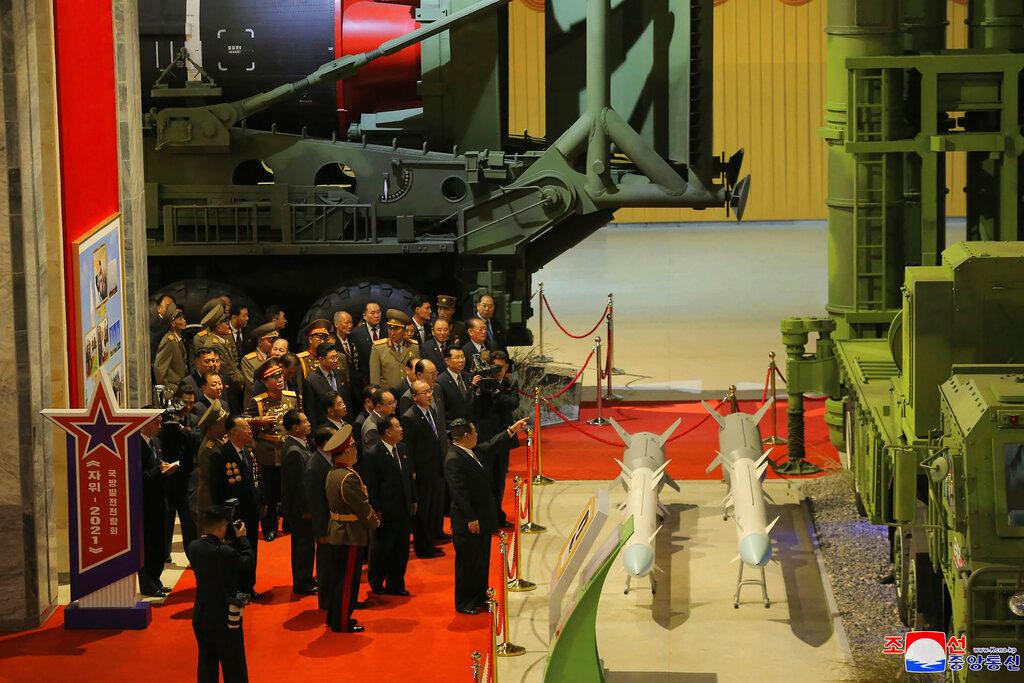North Korea says tested new ‘submarine-launched ballistic missile’
This comes as both Koreas build up their weapons capabilities in what could become an arms race on the peninsula, and with Washington-Pyongyang dialogue at a standstill.
Just In
North Korea successfully tested a “new type” of submarine-launched ballistic missile, state media reported Wednesday as the nuclear-armed country pursues ever more improved weapons.
The device had “lots of advanced control guidance technologies”, the official Korean Central News Agency said, adding that it was fired from the same vessel that the North used in its first SLBM test five years ago.
It did not mention leader Kim Jong Un, indicating he was not present for the event.
Pictures in the Rodong Sinmun newspaper showed the black and white missile emerging from calm waters trailing a column of fire and smoke, and a surfacing submarine.
Analysts said the images appeared to be one of the missiles Pyongyang put on show at a defence exhibition last week.
It was “a bit of flex to launch a new, previously untested missile from a submarine for the first test,” said Ankit Panda of the Carnegie Endowment.
But it was derived from a common platform used in other missiles, he tweeted, “and they’re pretty confident it won’t go boom”.
A proven submarine-based missile capability would take the North’s arsenal to a new level, allowing deployment far beyond the Korean peninsula and a second-strike capability in the event of an attack on its military bases.
But the use of the same “8.24 Yongung” submarine as it tested five years ago indicates that it may only have made limited progress in its launch capabilities.
According to a 2018 analysis by the US-based Nuclear Threat Initiative think tank, the experimental vessel “appears capable of firing a single ballistic missile” and has to surface every few days, limiting its operational usefulness.
And the Pentagon and analysts say that the North’s last SLBM test in 2019 is likely to have been fired from a submerged platform.
Tuesday’s test, carried out near Sinpo, the site of a major naval dockyard, came as both Koreas build up their weapons capabilities in what could become an arms race on the peninsula, and with Washington-Pyongyang dialogue at a standstill.
Washington, Seoul, and Tokyo condemned the launch, with all three describing it as a ballistic missile.
The missile travelled around 590km at a maximum altitude of about 60km, an informed South Korean source told AFP.
The White House stressed that the action was a threat which only underscored the “urgent” need for dialogue with Pyongyang, with spokesman Jen Psaki telling a press briefing: “Our offer remains to meet anywhere, anytime, without preconditions.”
In a reflection of international concern, diplomats told AFP that the United Nations Security Council would hold an emergency closed-door meeting Wednesday on North Korea.
Weapons exhibition
Pyongyang is banned from developing nuclear weapons and ballistic missiles under Security Council resolutions, and is subject to multiple sets of sanctions as a result.
It says it needs its arsenal to defend against possible US invasion.
Tuesday’s launch came after North Korea – which invaded its neighbour in 1950 – in recent weeks tested a long-range cruise missile, a train-launched weapon and what it said was a hypersonic warhead, sparking global concern.
For its part, South Korea last month tested its first SLBM, which put it among the elite group of nations that have demonstrated proven technology, and also unveiled a supersonic cruise missile.
Pyongyang this month also mounted a rare weapons exhibition, showcasing the gigantic intercontinental ballistic missile revealed last year.
Opening the display, leader Kim – who has overseen rapid progress in the North’s military technology – blamed Washington for tensions, dismissing US assertions that it does not have hostile intentions.
Kim met three times with former US president Donald Trump, who boasted of stopping a war but failed to reach agreement on ending North Korea’s nuclear programme.
Talks essentially stalled after a Kim-Trump summit in Hanoi collapsed in 2019.
Subscribe to our newsletter
To be updated with all the latest news and analyses daily.
